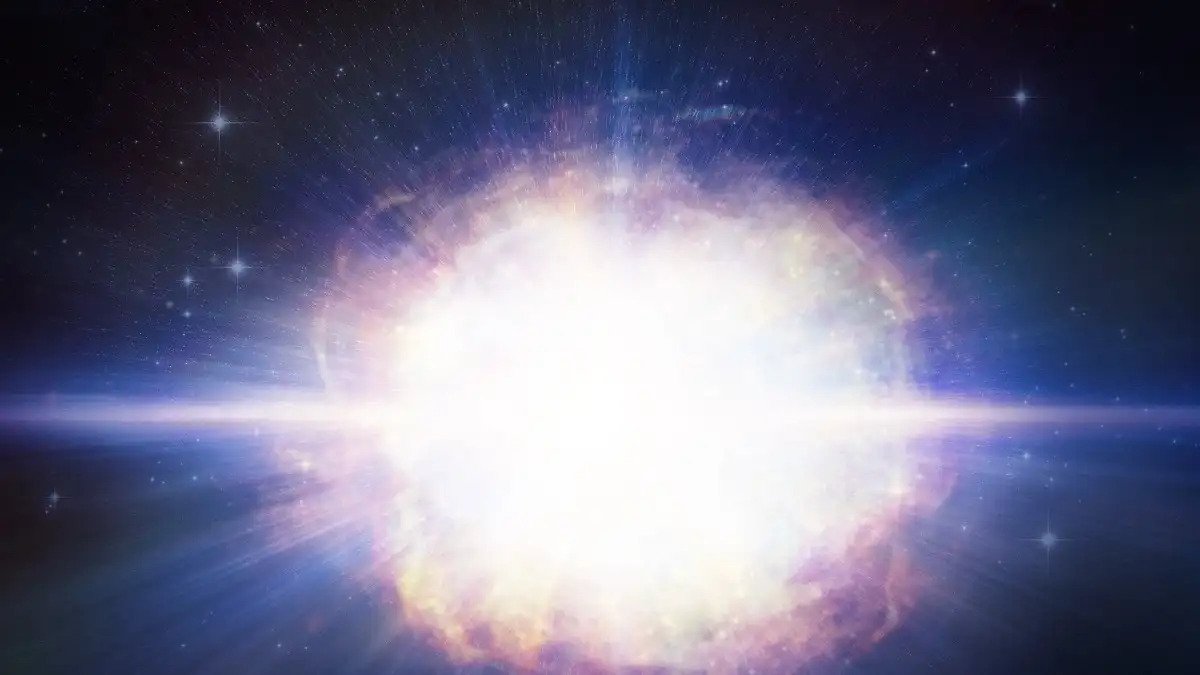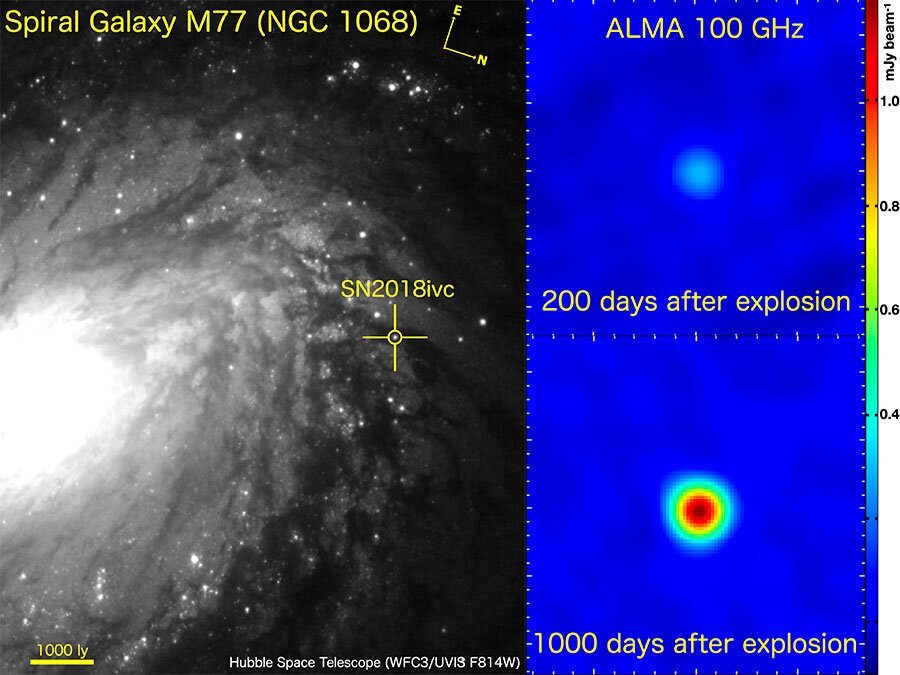Scientists were interested in an unusual supernova, which began to fade, and then flared up again with a new force. Astronomers believe that it represents a new type of this phenomenon, intermediate between what is happening in single and close binary systems.

Unusual supernova
Scientists from the universities of Kyoto and Osaka, working with the ALMA antenna array, which is located in South America, have made an interesting discovery in another galaxy. They observed the supernova SN 2018ivc, which behaved a little unexpectedly and began to fade 200 days after the explosion.
They decided to check it again at the moment when 1000 days had passed after the explosion. To their surprise, it did not fade again, but gained brightness again, as if reborn. This is the first such phenomenon that has been observed in the millimeter range. And it was this circumstance that gave scientists the opportunity to explain what they were actually observing.
According to scientists, they are dealing with a new type of phenomenon that occupies an intermediate position between type I and II supernovae. And it is connected with the fact that the star has a companion, but it is at a certain distance from it.

Complex past of a supernova
Supernovae are some of the most powerful explosions in the Universe. Scientists divide them into two types and many subtypes. In the first case, there is a companion in the star that explodes, which pulls its outer layers over itself for thousands of years before the explosion. This speeds up the process, but ultimately leads to large mass losses.
The second case happens when the star does not have a companion or it is located too far from it. In this case, it burns out all its hydrogen to the end and begins to form heavier and heavier elements. In the end, this culminates in collapse and the formation of a much heavier remnant, on which a significant part of the ejected material falls after the explosion.
Scientists have long wanted to find out what happens when a companion is not very close to a star, but not too far away. And it was SN 2018ivc that gave them the opportunity to admire it. They found that about 1500 years before the explosion, the companion of the star pulled away from it a significant part of the matter that hung in space like a shell.
When the star exploded, it turned out to be relatively weak again and began to fade after 200 days even before the ejection got to this shell. After that, it continued its movement, in the interval between 200 and 1000 days, it got it and broke out with renewed force.
According to phys.org
Follow us on Twitter to get the most interesting space news in time
https://twitter.com/ust_magazine

